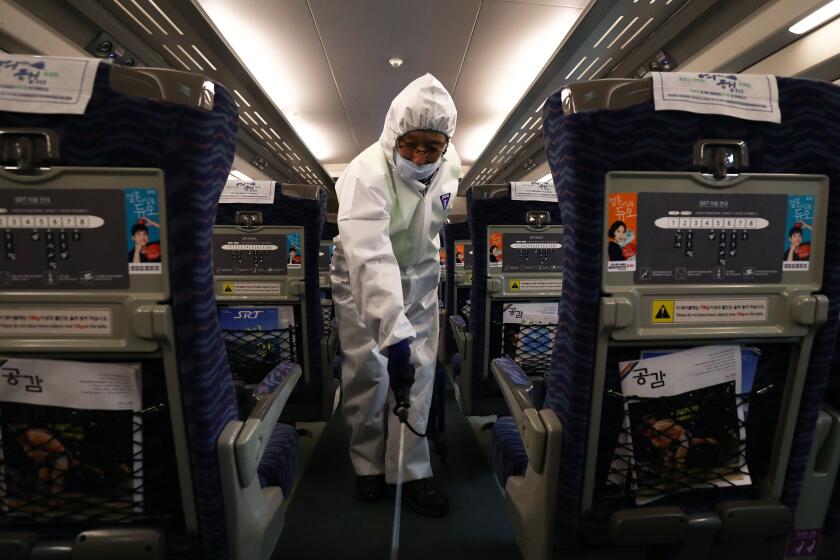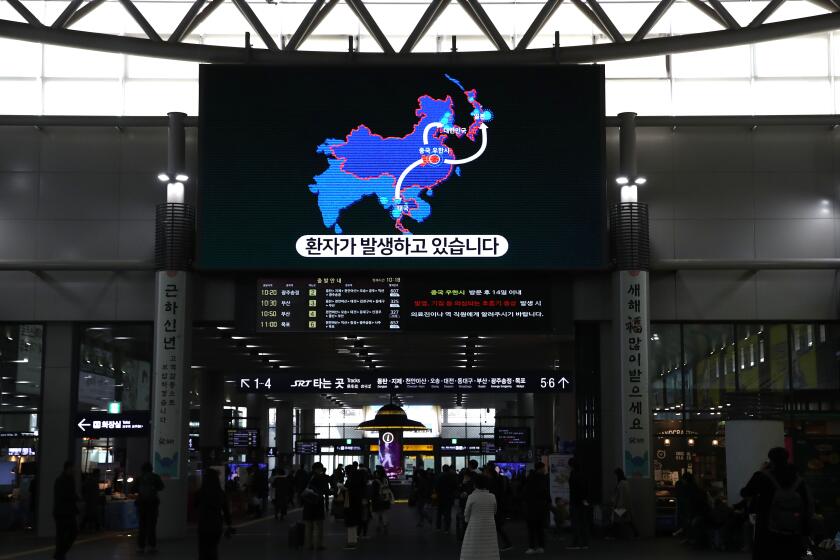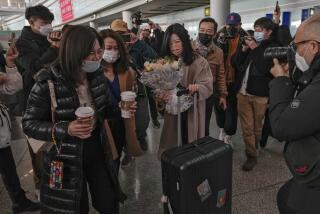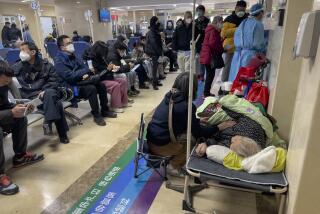Chinese President Xi Jinping calls situation serious as China scrambles to contain virus
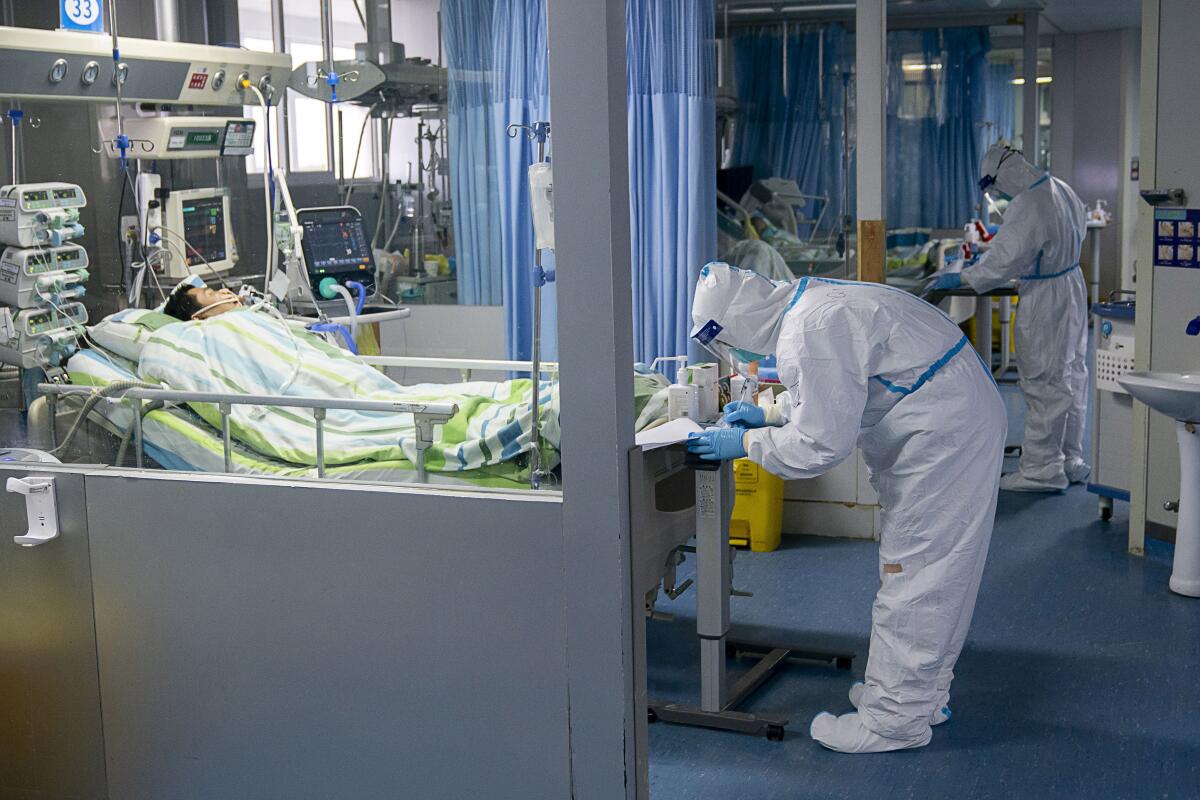
- Share via
BEIJING — As Chinese President Xi Jinping issued a public warning Saturday of “serious” concerns over the deadly coronavirus outbreak, officials in the epicenter of Wuhan scrambled for more beds amid chaos at local hospitals, with the effects rippling across China and beyond.
In Beijing, tourist attractions, including exhibitions at the Summer Palace and parts of the Great Wall, were closed indefinitely. Ice skating rinks popular with locals were also shut down.
The U.S. State Department urged Americans not to travel to Wuhan, a city of 11 million in central China that has been under lockdown since Thursday, with all trains, buses and airplane flights suspended. Beginning Sunday, most private vehicle use was banned in downtown Wuhan and surrounding cities were also placed under lockdown.
One patient is in good condition and is in isolation at a hospital, Orange County health officials said.
Early Sunday, Chinese officials announced that the death toll from the virus, which is believed to have jumped from animals to humans at a seafood and wildlife market, has increased to 56 people, almost all in Hubei province, where Wuhan is the capital. Most of those who have died were elderly, but a 36-year-old man succumbed to the virus last week, and a healthcare worker was also reported among the fatalities.
In total, the National Health Committee reported 1,975 confirmed cases in China, including 324 severe cases.
The outbreak intensified as millions of Chinese were traveling for the Lunar New Year holiday, dampening celebrations around the country on Saturday. Earlier in the week, many Chinese had already gone to their hometowns to be with family or boarded planes for vacations abroad. Cases have been confirmed in South Korea, Japan and other locations in Asia, with Australia and Malaysia reporting their first cases Saturday. Most of the patients had recently been to Wuhan.
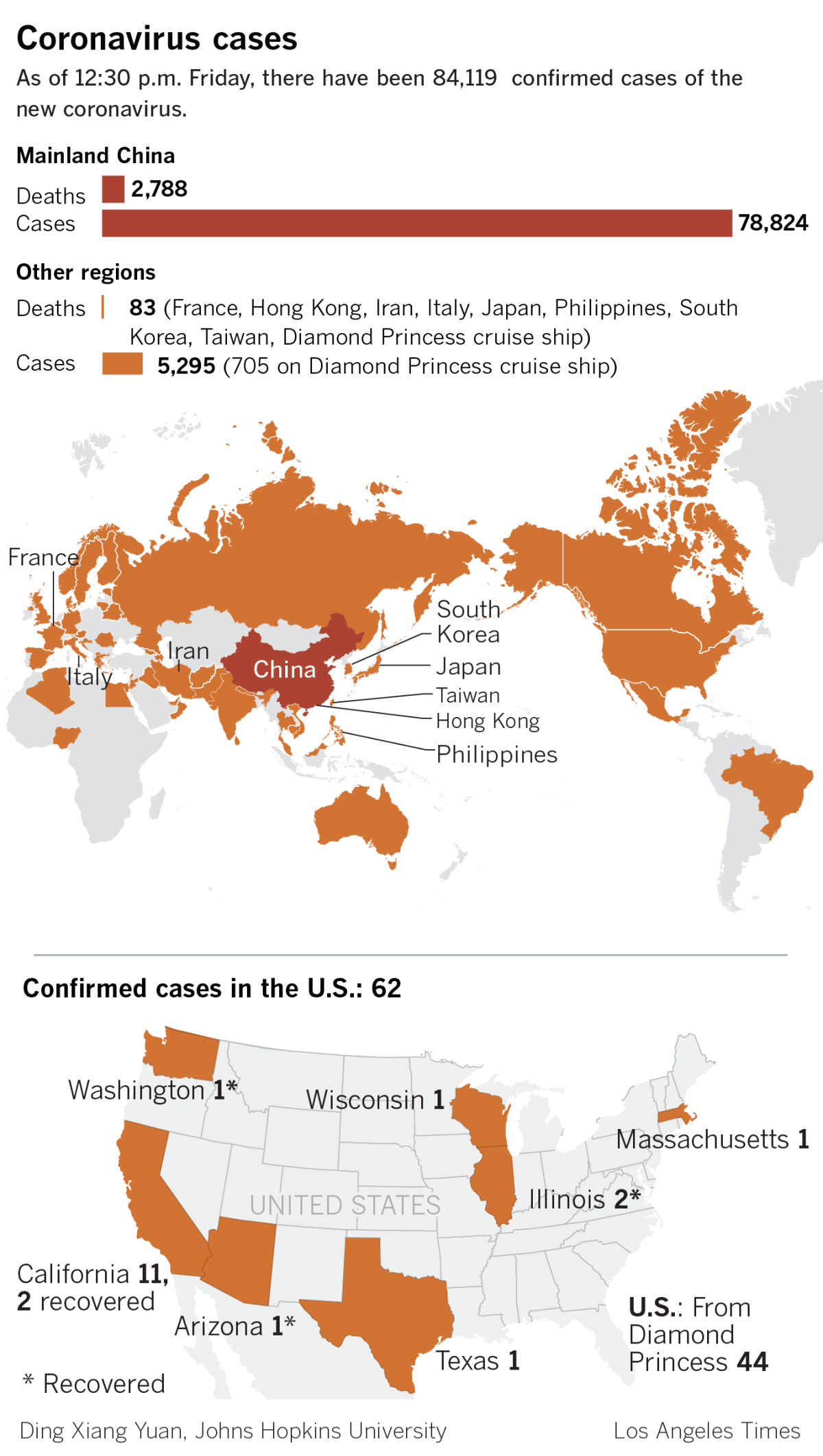
Chinese travel agencies have been told to halt all group tours, the state-owned English-language China Daily newspaper reported, citing the China Assn. of Travel Services.
In Hong Kong, city leader Carrie Lam said her government would raise its response to the highest emergency level and shutter primary and secondary schools for two more weeks beyond the coming week’s Lunar New Year. Lam also said that direct flights and trains from Wuhan would be blocked.
With five cases of the illness reported in Hong Kong, a marathon that was expected to draw 70,000 participants Feb. 9 was canceled, the South China Morning Post newspaper reported.
Two cases have been diagnosed in the U.S., one in Washington state and one in Chicago. The Chicago patient is a woman in her 60s who had recently returned from Wuhan and had not had significant contact with anyone beyond her household, said Allison Arwady, commissioner of the Chicago Department of Public Health.
Any time a “novel” virus appears on the scene, things immediately become much more complicated. That’s certainly the case with the coronavirus from China.
The first coronavirus cases in Europe have also been confirmed, with three patients being treated in French hospitals. All three had recently traveled to China; they were reportedly doing well, according to officials.
A leading infectious disease specialist treating two of the patients said the illness appears less serious than comparable previous outbreaks, such as the SARS epidemic that resulted in more than 800 deaths in 2003.
A respiratory disease expert with the U.S. Centers for Disease Control and Prevention said she expected more coronavirus cases in the U.S., including among patients’ close contacts and medical workers. But she said there was no need for Americans to panic.
“Again, while there are many unknowns, CDC believes that the immediate risk to the American public continues to be low at this time, but that the situation continues to evolve rapidly,” said Nancy Messonnier, director of the CDC’s National Center for Immunization and Respiratory Diseases.
If the coronavirus outbreak in China were a Hollywood movie, now would be time to panic. But in real life, most Americans have no need, experts say.
Symptoms of the virus include fever, coughing and shortness of breath, with severe cases progressing to pneumonia. It is not clear how lethal the virus is or even whether it is as dangerous as the ordinary flu, which kills thousands of people every year in the U.S. The rapid increase in reported deaths and illnesses does not necessarily mean the situation is getting worse, experts cautioned, but could reflect better monitoring and reporting of the virus.
After a slow start when the first cases were diagnosed in December, Chinese officials have sought to demonstrate a strong response to the outbreak — unlike during SARS, when they downplayed the threat for months.
On Saturday at a Communist Party Central Committee meeting to address the outbreak, Xi ordered officials at all levels of government to make it their top priority.
“Life is of paramount importance. When an epidemic breaks out, a command is issued. It is our responsibility to prevent and control it,” Xi said, describing the outbreak as “serious,” according to the New China News Agency.

Amid reports that patients with flu-like symptoms were being turned away from hospitals, about 450 military medical workers, as well as healthcare workers from other parts of the country who have volunteered to help, were arriving in Wuhan.
Local officials ordered Wuhan hospitals to staff 24-hour clinics to examine people with fevers and pneumonia symptoms. More than 1,400 new beds have been added.
A Wuhan city emergency command set up to address the outbreak announced Saturday that a second new hospital, with 1,300 beds, would be built within two months.
State-run news media posted photos of the first hospital under construction, with swarms of bulldozers smoothing a dirt field.
The Ministry of Commerce announced that two million protective masks would be sent to Wuhan. The ministry also ordered eggs, fish, beef, pork and other staples to be released into Wuhan from food reserve centers. The ministry also asked that supermarkets, pharmacies and gas stations remain open, and that restaurants should provide food delivery to households.
In Beijing, officials announced that temperature screenings would be held at subway stations. People returning to the city from the Wuhan area should quarantine themselves at home for 14 days, a city notice said.
The Associated Press contributed to this report.
More to Read
Sign up for Essential California
The most important California stories and recommendations in your inbox every morning.
You may occasionally receive promotional content from the Los Angeles Times.

